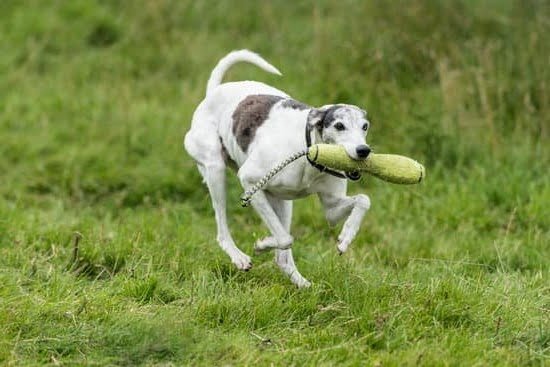Introduction
I recently trained my dog to provide support and it has been an incredibly rewarding experience. I never thought a pup could do so much to make me feel better whenever I am feeling overwhelmed, anxious or depressed. Not only is the act of training a dog for support beneficial for individuals, but it can also be very therapeutic for their furry companion as well. That’s why I believe it’s important to discuss the various ways that one can train their beloved pup for providing supportive care.
By properly teaching your pup how to perform tasks such as offering comfort when needed, responding appropriately to emotions and intervening in stressful moments, you are not only helping yourself, but you’re building a stronger bond with your pooch as well. In this article, we’ll look at some basic tips on how to properly train your dog for support and why it’s so beneficial for everyone involved.
Establish Rapport and Bonding
Building a trusting relationship between the dog and their handler is essential for successful support training. Establishing rapport is an important part of building this trust, as it requires understanding, empathy, and patience. One way to establish rapport is to focus on positive behavior rather than punishing negative behavior, since punishment can damage the bond. Acknowledging and praising the dog frequently during training can help create a secure connection between puppy and handler. Aside from positive reinforcement, bonding activities such as play time or snuggles can also be beneficial in creating a strong bond with your pup. Spending at least 15 minutes each day dedicated to building this connection is key for both parties to form a lasting relationship that goes beyond training exercises.
Building a Foundation
Training a dog for support is a multi-step process that starts with building a foundation. This begins by exploring the basic commands that are used when training service animals. These commands can include things such as sit, stay, come, down, and leave it. It is important to start without any distractions, focusing only on repetitiously reinforcing these commands until the dog has mastered them in any environment. As the dog learns each command, reward it for its accomplishments. Positive reinforcement goes a long way in maintaining good behavior from pets when mastering new skills and commands. As you begin to move from basic commands to teaching more complicated tasks don’t forget to switch up your rewards- make sure to use different treats and even verbal rewards! Additionally, attempt the same task in different areas of your home or other environments so that the animal will not be confused about what it should do depending on where it is taken or taken to be trained. Moreover, timing should not be forgotten when reinforcing positive behavior; rewarding too soon or too late can lead to confusion.
Refining Skills
Training a dog for support requires discipline and practice. The most important part of this task is to ensure the dog is adequately motivated. This can be done through positive reinforcement when the animal does something correctly, such as verbal praise or a treat. By consistently rewarding the desired behaviour, the dog will begin to recognize that it is good and begin to associate it with rewards.
It is also important to accurately identify any undesired behaviours and correct them in an appropriate way, such as with a stern “no” or redirecting the dog’s attention away from what they are doing. Consistency between different handlers is imperative – if everyone reinforces certain behaviours differently, the pup may get confused and become discouraged.
To further refine skills, practicing training exercises in increasingly distracting environments may be beneficial. Reward good behaviour when distractions present themselves (toys, people) by giving treats or vocal praise. If they show an undesirable behaviour (jumping on people), immediately remove them from the environment so they can reset their focus on you and your commands alone. Repeat these steps several times with each level of distraction until they no longer show inappropriate behaviours.
Finally, keep in mind that although individual behaviours may take months or even years to progress, consistency ensures a much more successful outcome in terms of goal setting and problem solving.
Facing Challenges
One of the primary goals when training a dog for support is to keep the handler and their pup focused and motivated. An important tip in doing this is to break down long tasks and bigger goals into smaller, increasingly achievable goals. This will help both you and your pup be successful as each goal is reached. To further aid in avoiding obstacles along their journey, give your pup plenty of praises, rewards, and positive reinforcements when they demonstrate the desired behavior or perform correctly. Additionally, take advantage of breaks while training a dog for support; it’s beneficial for yourself and your pup to reset after working hard on the task at hand. While small breaks are helpful, being careful not to lose too much time due to excessive setbacks or distractions can help you stay on track towards accomplishing the long-term goal. With patience, clear communication skills, consistent practice, and reward systems for successes, handlers and their dogs can build an extraordinary bond that together allows them to excel in assisting each other’s needs!
The Next Level
Advanced commands and support behaviors can play a key role in helping a dog and handler progress with their overall training. Teaching the dog specific behaviors for support tasks, such as standing still or holding an item steady, can help them understand what is expected of them and respond accordingly. Additionally, teaching standard obedience commands such as ‘sit’, ‘down’, ‘heel’ and ‘come’ will help reinforce the bond between handler and dog while providing your pet with additional mental stimulation.
It is important to get familiar with positive reinforcement techniques when teaching these commands, as it helps build trust between you and your dog while encouraging good behavior. By using verbal praise, treats or games you can motivate the pup to learn these support tasks quicker and more reliably. Training should be kept fun for both parties involved to ensure everyone stays engaged during each session. You should also remember that not every command needs to be 100 percent perfect all at once – consistency, patience and practice are key!
Troubleshooting
When training a dog for support, it is important to remember that the key to success lies in providing clear expectations and sticking with a consistent approach. This means that it’s important to use positive reinforcement methods such as rewards and praise when the desired behavior is displayed. Additionally, it can be useful to allow the dog ample opportunity to practice successes by reinforcing desirable behaviors through repetition and consistency.
However, there may be times when things don’t go smoothly and unexpected challenges arise. In these instances, it can be helpful to take a step back and analyze the situation. Take into account factors such as where you are training your dog, what equipment you have available, whether distractions or external influences exist in the environment, or if an exercise is particularly difficult for your pup. By taking these considerations into account before reacting, adjustments can then be made appropriately tailored to your pet’s needs by adapting training techniques accordingly. It can also help to have patience during this process; each struggle experienced offers an opportunity for both you and your pup to learn something new and become better partners!
Conclusion
In conclusion, training a dog for support requires patience and dedication. The main steps involved include providing consistent positive reinforcement of desired behaviors, creating an environment where the dog can thrive, and familiarizing the dog with its support role. Once trained, a service dog brings significant physical and emotional benefits to both their handler and society as a whole. As such, maintaining these abilities over time is important. This includes regularly assessing the situation to ensure appropriate rules and regulations are followed, providing reinforcement of learned cues when needed, and ensuring routine medical check-ups are scheduled in order to track changes in health or behavior. With regular care and attention, trainers can foster capable service dogs that bring substantial advantages to those who rely on them.

Welcome to the blog! I am a professional dog trainer and have been working with dogs for many years. In this blog, I will be discussing various topics related to dog training, including tips, tricks, and advice. I hope you find this information helpful and informative. Thanks for reading!





